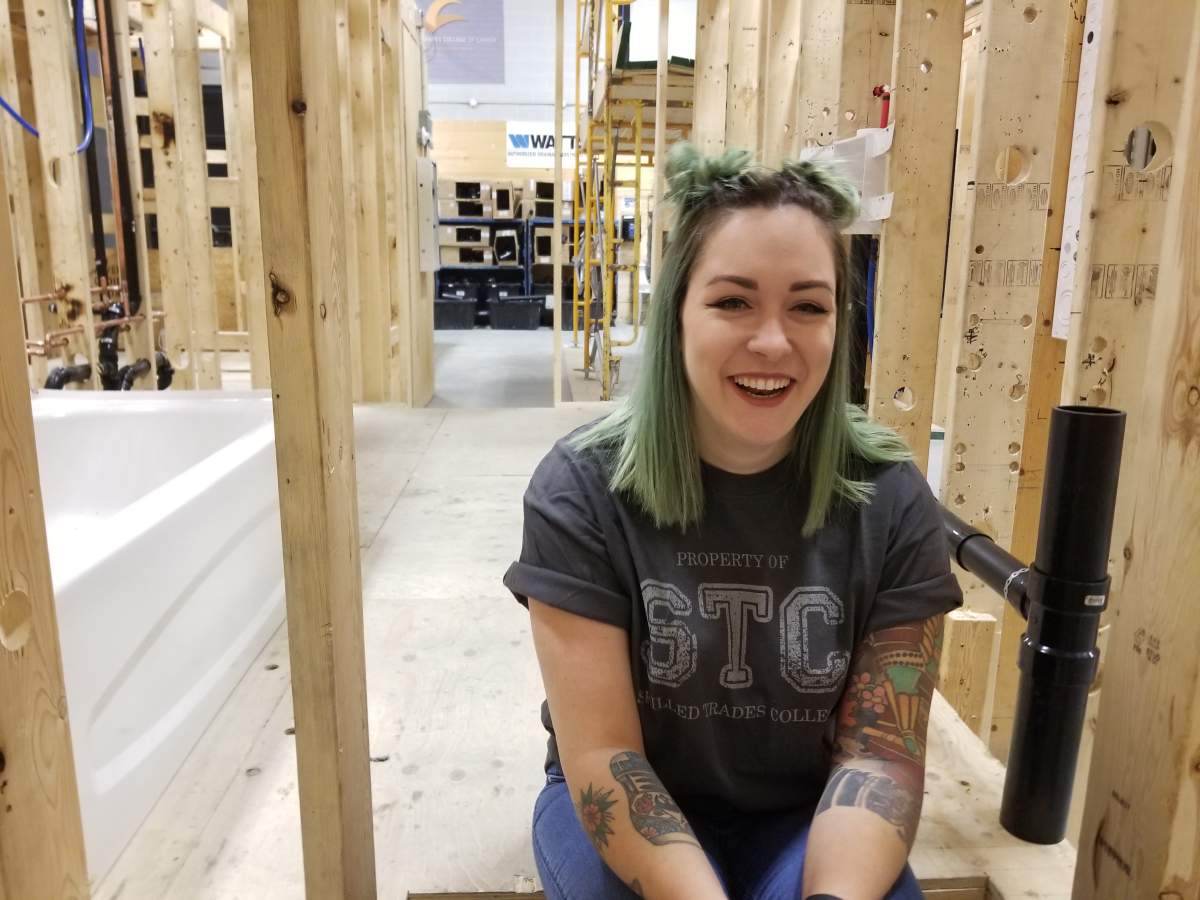When Stephanie Brown graduated from the 12-week electrical pre-apprenticeship program at Ontario’s Skilled Trades College in the fall of 2017, she submitted her resume everywhere she could think of.

It wasn’t an easy process. One shop asked if she was applying on behalf of her son or husband then didn’t call back once she clarified it was for herself. Brown applied to about 50 jobs before she finally got a call back for a trial gig.
While Brown’s story speaks to preconceived notions surrounding women in the trades, it also highlights the current demand for jobs in these fields of work.
In conjunction with the Skilled Trades College of Canada, we take a look at how women are faring in the changing profession and what work still needs to be done to fill in the gender gap.
A growing demand for workers
According to a 2017 report from Canadian Manufacturers & Exporters, women currently hold 28 per cent of jobs in the manufacturing sector and a mere 4.5 per cent of jobs in the skilled trades.
Yet the need for tradespeople has been steadily climbing in Canada over the past few years. As a result of recent condo and housing booms in major cities, posts for general contractors on the job site Indeed increased 111 per cent since 2016. Openings for electricians, HVAC installers and plumbers have also been on the rise.
That shortage has translated into the need for more skilled workers, including women who make up 48 per cent of the Canadian labour force.
“There’s still a stigma. Women in construction isn’t always a first choice,” says Ralph Cerasuolo, Skilled Trades College director.
A changing conception

Get daily National news
Before applying to Skilled Trades College, Brown, 27, worked as a server and a manager of a medical cannabis clinic. She was looking for a more hands-on career –one that she knew would always be in demand.
“I looked into a bunch of things but electrical made the most sense for me,” she says. “I didn’t know anything about it but I decided to give it a shot and…I really enjoyed it.”
Today Brown works for a larger company of about 100 electricians, but she’s the only woman there.
Meanwhile, the college now boasts anywhere from 300 to 400 students per year, with roughly 15 of those students women. It’s a small percentage, but a significant increase from the two women who enrolled during the school’s first year, says Cerasuolo.
“The simplest way to make women aware that there’s opportunities is for business owners and contractors to step forward in the public eye and to say, ‘We’re hiring women so if you’re interested you should apply,’” he notes.
Further obstacles
According to a 2015 report from the U.S. Institute for Women’s Policy Research surveying women in the construction trades, sexual harassment continues to be a factor for women in these fields of work. Thirty-one per cent of respondents cited it as a constant or frequent experience at work.
Brown says she experienced an incident at her own job, but that her employers dealt with it and switched her job site so she would no longer have to deal with the individual in question.
The issue of harassment is something students at the college ask her about when she stops by for a visit, but she says women are also concerned about the likelihood of having a job, whether she’s treated fairly or just how hard the work itself actually is.
“The company that I’m with right now is definitely really fair to me. They don’t treat me differently, but sometimes I do need different accommodations just because I have a different anatomy,” she says.
“I won’t use some of the certain portable washrooms because they’re super gross. It’s things like that that people don’t think of. But they treat me as an equal. I feel like I’m part of the team there.”
Future recruitment
These days there are a handful of organizations in Canada dedicated to helping women in the skilled trades, like the Canadian Building Trades Union program Build Together, which promotes and mentors women in skilled construction trades. Meanwhile Gusto! in Newfoundland runs free workshops for high school girls interested in carpentry and electrical trades.
Brown admits she was apprehensive the first day she walked into class knowing she was one of only three women in her class, but that feeling quickly disappeared once she realized everyone was at the same beginner level she was.
Now, she says the tangible results of her newfound skills—coupled with being paid as she learns in her current apprenticeship, makes it all worthwhile.
“Tough it out. Stick it out. It’s very rewarding,” she says to women considering jobs in skilled trades.
“It’s awesome to look at something at the end of the day and say, ‘I did that.’ Or drive past a house a year down the road and say, ‘I helped build this house. They have their lights on because of me.’”
“If women want to apply and work in a career that they can just be proud of at the end of the day, this is an option. It’s real-world skills you’re always going to have.”
If you’re interested in a career in the skilled trades, Skilled Trades College of Canada is the perfect place for a hands-on learning experience. Sixty per cent of their programs are hands-on and teach skills essential for an ideal apprentice position. Learn more here.



